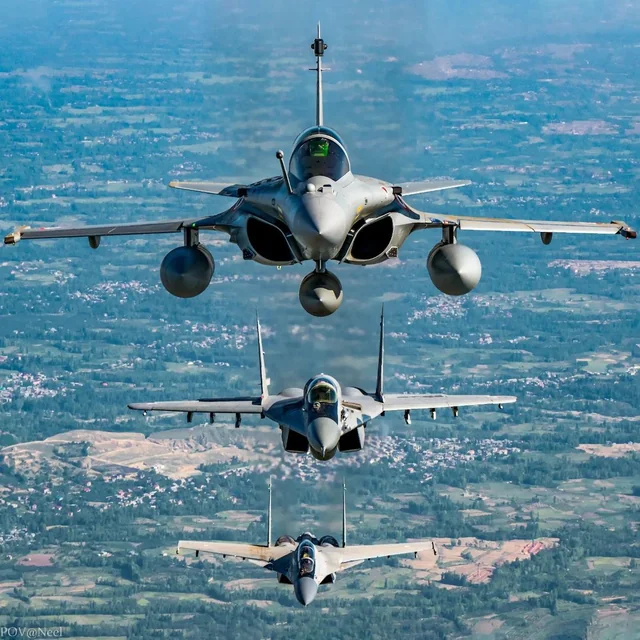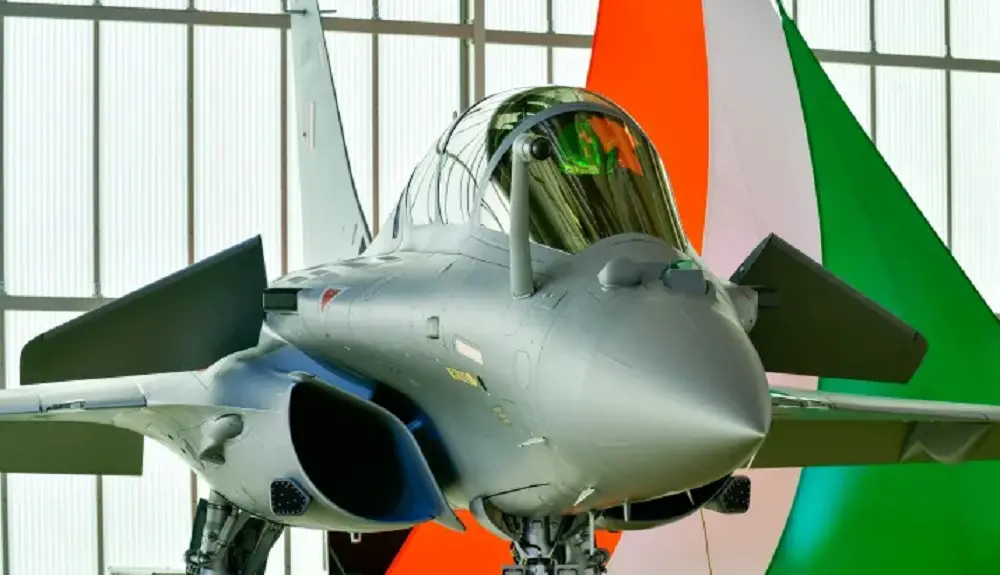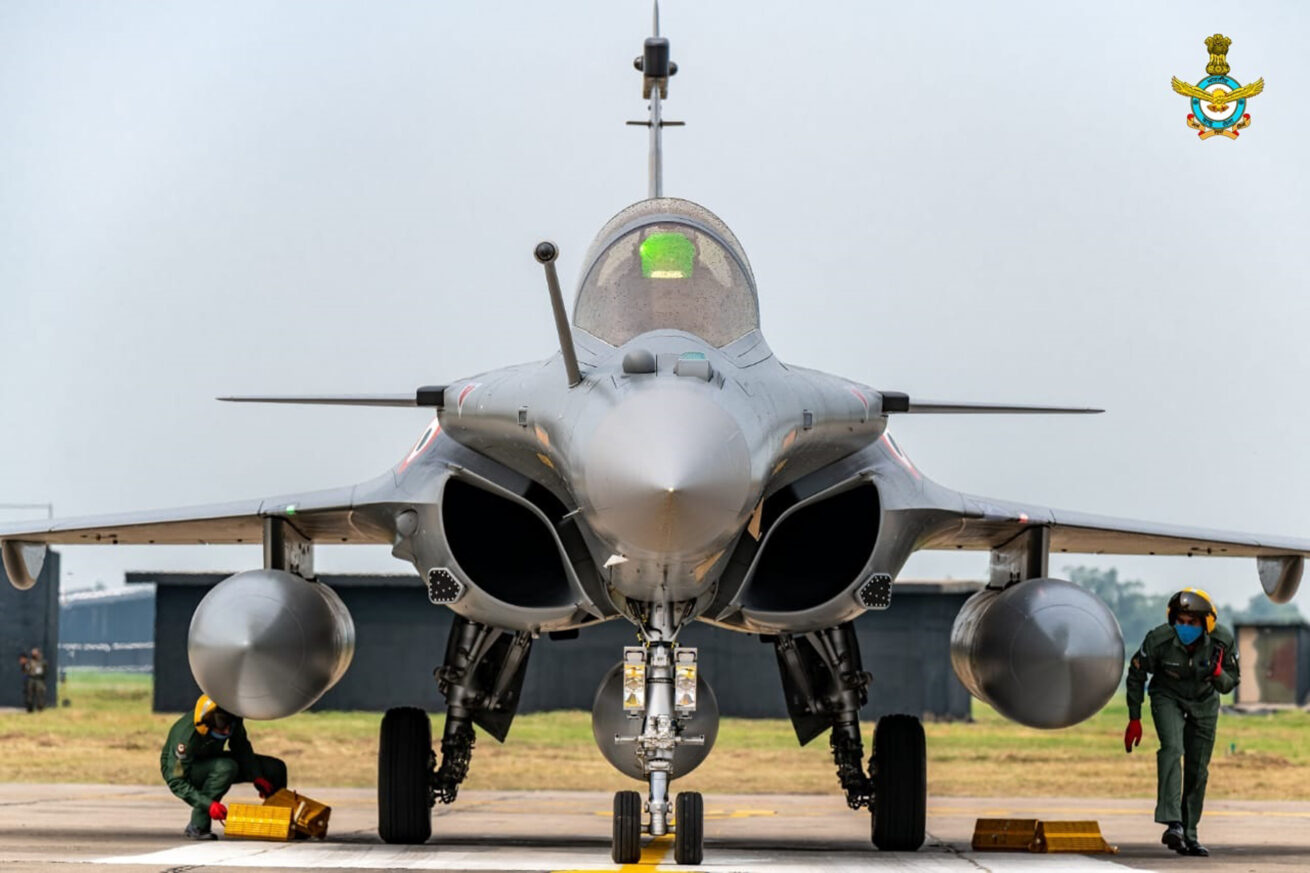Operation Sindoor Controversy: Modi Government Under Fire for Concealing IAF Fighter Losses
This stunning allegation of "misleading" the country comes on the back of candid remarks by India’s own Defence Attaché to Indonesia, Captain (Indian Navy) Shiv Kumar, who, during a closed-door regional seminar in Jakarta, openly acknowledged what New Delhi’s official channels have long refused to confirm.
(DEFENCE SECURITY ASIA) — India’s already strained civil-military discourse has been rocked once again by a fresh political firestorm, as the Congress Party levels grave accusations that the Modi government “misled the nation” by concealing the Indian Air Force’s (IAF) reported loss of five frontline fighter aircraft during the high-stakes Operation Sindoor.
This stunning allegation comes on the back of candid remarks by India’s own Defence Attaché to Indonesia, Captain (Indian Navy) Shiv Kumar, who, during a closed-door regional seminar in Jakarta, openly acknowledged what New Delhi’s official channels have long refused to confirm.
At the centre of this brewing controversy is Operation Sindoor — a covert cross-border air campaign launched by the IAF on the night of 7 May 2025 to strike terror-linked sites inside Pakistan, a move that was meant to deliver a strategic jolt to militant networks operating along the volatile Line of Control.
Yet what was sold domestically as a surgical success is now mired in allegations of half-truths and opaque disclosures that critics argue have undermined both public trust and operational credibility.
Congress general secretary in-charge of communications, Jairam Ramesh, did not mince his words when he amplified the explosive media report across his official X (formerly Twitter) handle, accusing the ruling Bharatiya Janata Party (BJP) of systematically burying the truth from the Indian public.
In a post that instantly went viral among India’s chattering defence circles, Ramesh pointed to the specific revelations by Captain Shiv Kumar that the IAF suffered fighter jet losses at the hands of Pakistan’s air defences — an admission that, if fully corroborated, would mark one of the most significant air combat setbacks for India in recent memory.
Pawan Khera, Congress’ combative head of media and publicity, further turned the screws on the Modi administration, alleging that the government “misled the nation from the start — failing to disclose the aircraft losses during Operation Sindoor.”

Khera’s statement underscored that vague references to aerial attrition had first surfaced during a carefully worded briefing by DG Air Ops, Air Marshal Awadhesh Kumar Bharti, who had remarked, “we are in a combat situation and losses are a part of combat.”
But according to Congress leaders, this sanitized phrasing fell far short of an honest reckoning with the scale of the loss.
It took the intervention of India’s Chief of Defence Staff, General Anil Chauhan, to reluctantly acknowledge India’s air combat attrition in an off-the-cuff statement to Bloomberg TV, delivered on the sidelines of the Shangri-La Dialogue in Singapore — a move that critics argue was both belated and strategically tone-deaf.
What has further inflamed the opposition’s accusations is Captain Shiv Kumar’s forthright account delivered to Indonesian defence academics and military strategists at Universitas Dirgantara Marsekal Suryadarma on 10 June 2025.
The seminar, titled “Analysis of the Pakistan–India Air Battle and Indonesia’s Anticipatory Strategies from the Perspective of Air Power,” became the venue for a revelation that has since sent shockwaves through South Asia’s tightly knit security community.
In his presentation, Captain Kumar declared, “I may not agree that we lost so many aircraft, but I do agree we did lose some aircraft.”
According to leaked slides obtained by regional defence analysts, the losses reportedly include three Rafale fighters — India’s crown jewel of air dominance procured from France at a cost of around USD 8.7 billion (approximately RM40.8 billion) — along with one Su-30MKI and one MiG-29.
The financial and operational implications of such losses are profound.
Each Rafale, conservatively estimated at USD 240 million per unit (roughly RM1.1 billion), represents not just cutting-edge avionics and BVR missile capabilities, but also a major pillar of India’s deterrence posture against both Pakistan and China.

Defence watchers note that the Rafale’s prized combination of AESA radar, Meteor air-to-air missiles, and advanced electronic warfare suites were intended to tip the regional air power balance firmly in India’s favour.
Yet these assets, Congress argues, were left exposed by restrictive rules of engagement imposed by the Modi government’s civilian leadership — constraints that, critics allege, fatally undermined the IAF’s ability to neutralize Pakistan’s integrated air defence network.
Captain Kumar did not shy away from highlighting this uncomfortable reality.
As he pointed out, “The Indian Air Force lost fighter jets to Pakistan on the night of May 7, 2025 only because of the constraint given by the political leadership to not attack the military establishment or their air defences.”
Defence analysts familiar with the air battle confirm that Indian strike packages were ordered to surgically hit terror-linked compounds while scrupulously avoiding Pakistani military installations — a decision aimed at containing escalation in a nuclear dyad but which, paradoxically, gave the Pakistan Air Force (PAF) a free hand to mount an aggressive counter-response.
Senior PAF officers have since claimed that their fighters, operating under high-readiness protocols, swiftly transitioned from deterrence to a “shoot to destroy” posture once Indian jets penetrated domestic airspace.
Unofficial estimates circulating in Islamabad claim as many as six Indian fighters were downed during the brief but intense engagement — a claim that New Delhi has neither confirmed nor denied, fuelling a vortex of speculation and information warfare.
For its part, the Indian government continues to stonewall requests for precise loss figures, citing operational secrecy, troop morale, and diplomatic fallout.
Yet this opacity has only deepened suspicions that the public was misled about the true cost of Operation Sindoor, which had been touted as an unqualified success.
Pawan Khera’s broadside against the ruling coalition was scathing.



In a war or in a fight there will be casualties in both sides. There was mistake in the policy to attack the extremists hide out in Pakistan without a plan B. That is to silence the Pakistani airstrip at the same time.If it was a political decision not to attack the military establishments then it was a foolish decision.
We are 100 % confirmed India lost air battle 6 aircraft in 1st strike then 10 may 2025 21 loss aircraft last day India .
This is nothing but petty politics by the opposition party, evidently they are even ready to speak ill of their armed forces that too during the conflict while the Indian government official stance is that Operation Sindhoor is on pause and will restart if Pakistan does anything. It is made clear by both armed forces and government that giving losses during ongoing conflict is not wise. They will disclosed in future. Do you see Pakistan airforce telling how many aircrafts they lost on the first day?
May be try to grow up and stop promoting the narrative of a terrorist state Pakistan.
India bombed 9 locations in Pakisatn on the first day and successfully bombed 11 airbases in Pakisatn on 10th morning including their aircraft hanger and bunker facility of Noor Khan Airbase while Pakistan shot 800+ drones in India and could not hit a single site successfully.
As per one report US lost 375 Hellicopters in US-Iraq war and lost 24 most advanced fighter aircrafts to Iraq.
People need to stop repeating the Pakistani looser narrative who could not intercept a single Indian missile from hitting its target.